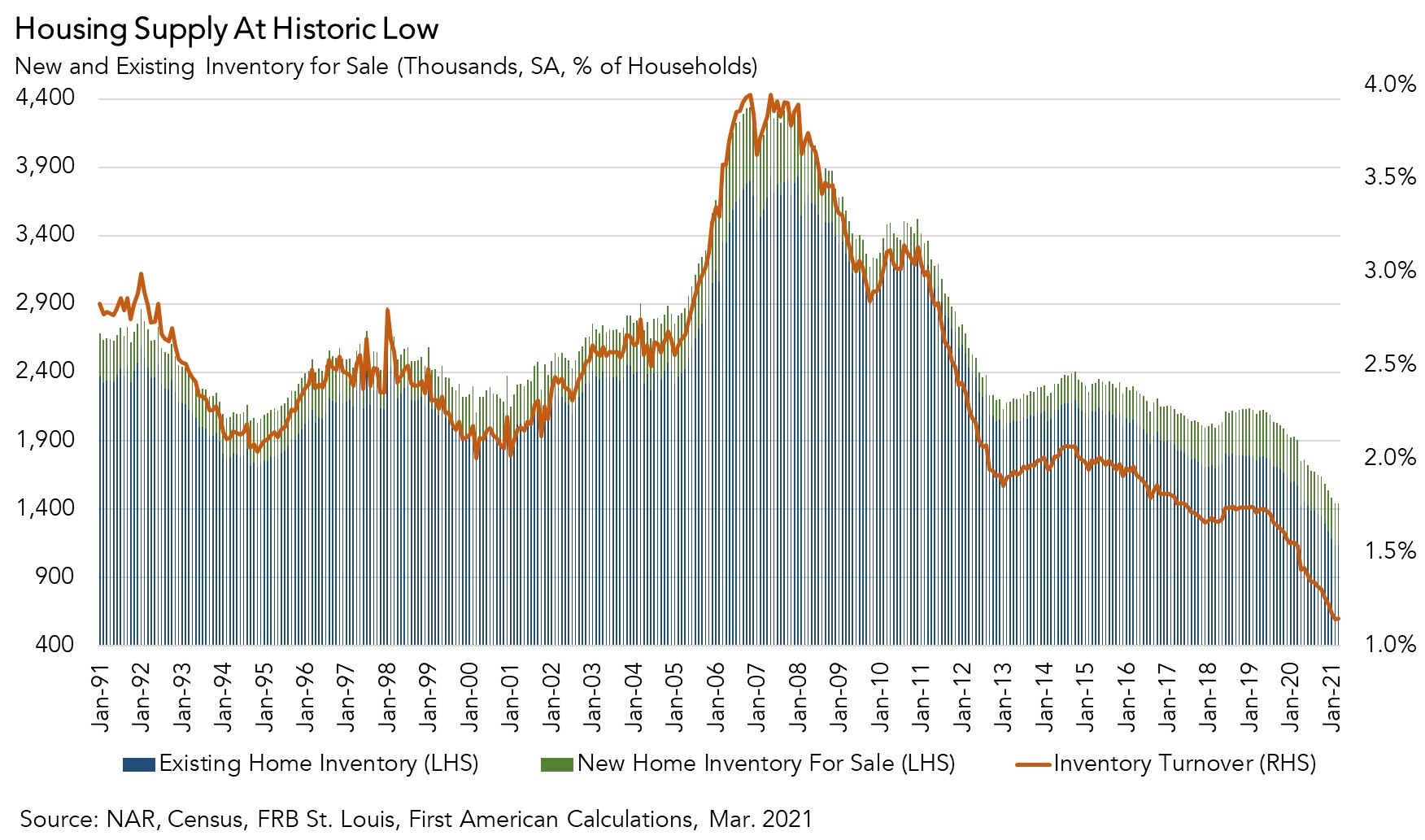More than a year into the pandemic, the housing market continues to run hot. The supply and demand imbalance brewing before the pandemic boiled over in the past year, resulting in record low levels of housing inventory and, consequently, the fastest pace of annual house price appreciation since 2005. With the arrival of the spring home-buying season, are there any signs of supply relief on the horizon?
“Today’s acute supply shortage will be hard to undo… In short, the housing inventory shortage is here to stay.”
Housing Supply at Historic Lows
Inventory turnover – the supply of homes for sale nationwide as a percentage of occupied residential inventory – was low even prior to the pandemic, but dropped precipitously last spring. In the 1990s, 2.5 percent of the stock of homes were for sale in an average month. In the aftermath of the Great Recession, inventory turnover fell and never recovered to pre-recession levels, averaging 1.85 percent between 2013 and 2019. Then came the pandemic.
Demand skyrocketed due to record low mortgage rates and a wave of millennials eager to buy homes, pitted against a wall of hesitant sellers. Between March 2020 and March 2021, inventory turnover fell from 1.53 percent to 1.15 percent. That means that earlier this spring only 115 in every 10,000 homes were for sale – a historic low.

Where to Look for Supply Relief?
Homebuilders have been trying their best to respond to the shortage of homes for sale. Housing starts in March increased to the highest pace since 2006, and single-family housing starts specifically have exceeded their pre-pandemic pace for eight straight months. While it can take anywhere from four to eight months to go from a housing start to a completed home, this is positive news for a housing market parched for new supply. However, new home sales only make up approximately 10 percent of all home sales, meaning the relief new home supply can provide is small relative to the size of the overall market. Worse, builders face severe shortages of materials, such as lumber, which may slow home building momentum and drive up the price of a newly built home.
What about the other 90 percent of home sales – existing homes? During the pandemic, many existing homeowners have withdrawn supply, for fear of the virus or of finding nothing to buy. The result has been that average tenure length – the amount of time someone lives in their home – has soared to a historic high of 10.5 years. Rising tenure length means there are fewer homes on the market as existing homeowners choose to stay put. As a result, the supply of existing homes for sale this March was 29 percent lower than in February 2020 (pre-pandemic) – just over a million.
A Long Way to Go
We may see some amount of fresh inventory come to market this spring in accordance with the usual seasonal trend, but today’s acute supply shortage will be hard to undo. It will take years of accelerated new home construction to close the gap from a decade of underbuilding, and an end to the pandemic by itself is unlikely to bring enough sellers to the market to bridge the gap between supply and demand. In short, the housing inventory shortage is here to stay.
Ksenia Potapov contributed to this blog post



